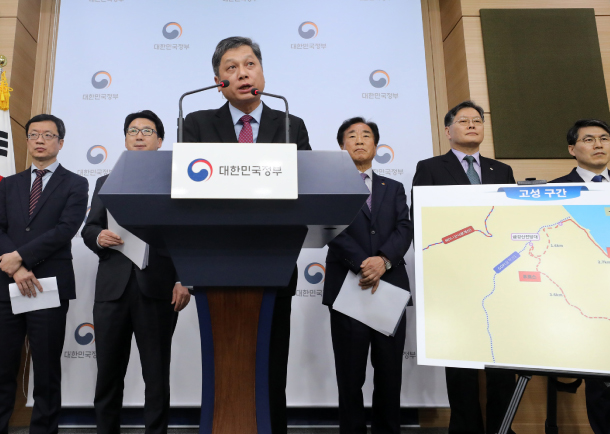Danger and benefits of DMZ trails

The author is head of the international, foreign policy and security team of the JoongAng Ilbo.
A novel concept and unfamiliar experiences can raise questions. So did the government’s ambitious project of turning the heavily fortified demilitarized zone (DMZ) — the last remaining Cold War frontier — into civilian hike trail courses earlier this month. The trails run about 250 kilometers (155 miles) from the west to the east with main points at Paju in Gyeonggi and the counties of Cheorwon and Goseong in Gangwon, becoming accessible after some guard posts were removed by the Koreas as part of a military agreement in September. Creating a peace zone along the border had been a key symbolic agreement between South Korean President Moon Jae-in and North Korean leader Kim Jong-un at their first summit in April last year.
The Ministry of National Defense said bulletproof vests and helmets will be given to security vehicles guiding the visitors along the DMZ walk paths for protection against any safety hazards. But if safety against possible firearm attacks is necessary, it would be safer to have visitors wear them instead of informing them of their existence in vehicles.
In an emergency situation, a person will not find the time to take protection from a vehicle and put it on. The experience will feel more like a military training course instead of a tranquil and healing-inducing walk in nature. But the course is aimed more at those looking for a thrilling experience than a peaceful one.
The Defense Ministry said armed and special commando forces would be on standby, keeping close watch over tourists and movements on the northern side to respond to any contingencies. According to Shin In-kyun, a military commentator and head of the Korea Defense Network, commando forces are trained for quick raids and surveillance so that they can locate an enemy base and make it easier for their soldiers to move in. They are frontline soldiers who put their lives at risk for every mission. Deploying such elite forces to keep eyes on civilian tourists for security protection raises questions. Again, the hike experience will become more like a military camp if visitors have to be escorted by commando convoys and soldiers.
One of the three paths along the Paju border will open first. Civilians would walk just 1.5 kilometers away from the North Korean guard post. Walking along the fences encircled by security forces within shooting range from North Koreans would be a terrifying experience, and yet could offer both relief by both easing military tensions and giving a crude reality check as to how the two Koreas remain divided.
The visitors also could come to appreciate the soldiers more, as they owe their safety to the people guarding the border.
The project can be surreal and unique, as it cannot be found anywhere else in the world. The government is spending 4.4 billion won ($3.9 million) to add tourism appeal to these frontline trails. In the long run, the project could reap unexpected propaganda results. They can be more effective than loudspeakers. The DMZ remained strictly off-limits to civilians, as they have come under deadly attacks. North Korean guards will be watching colorfully-dressed young South Koreans and others walk past them every day. They will be exposed to visual propaganda and may one day become overwhelmed by the freedom enjoyed by the people in the South.

A senior official of the Ministry of Interior and Safety on April 3 announces a plan to open three zones of the DMZ to the public, starting with Koseong in the east coast from later this month. [NEWS1]










with the Korea JoongAng Daily
To write comments, please log in to one of the accounts.
Standards Board Policy (0/250자)